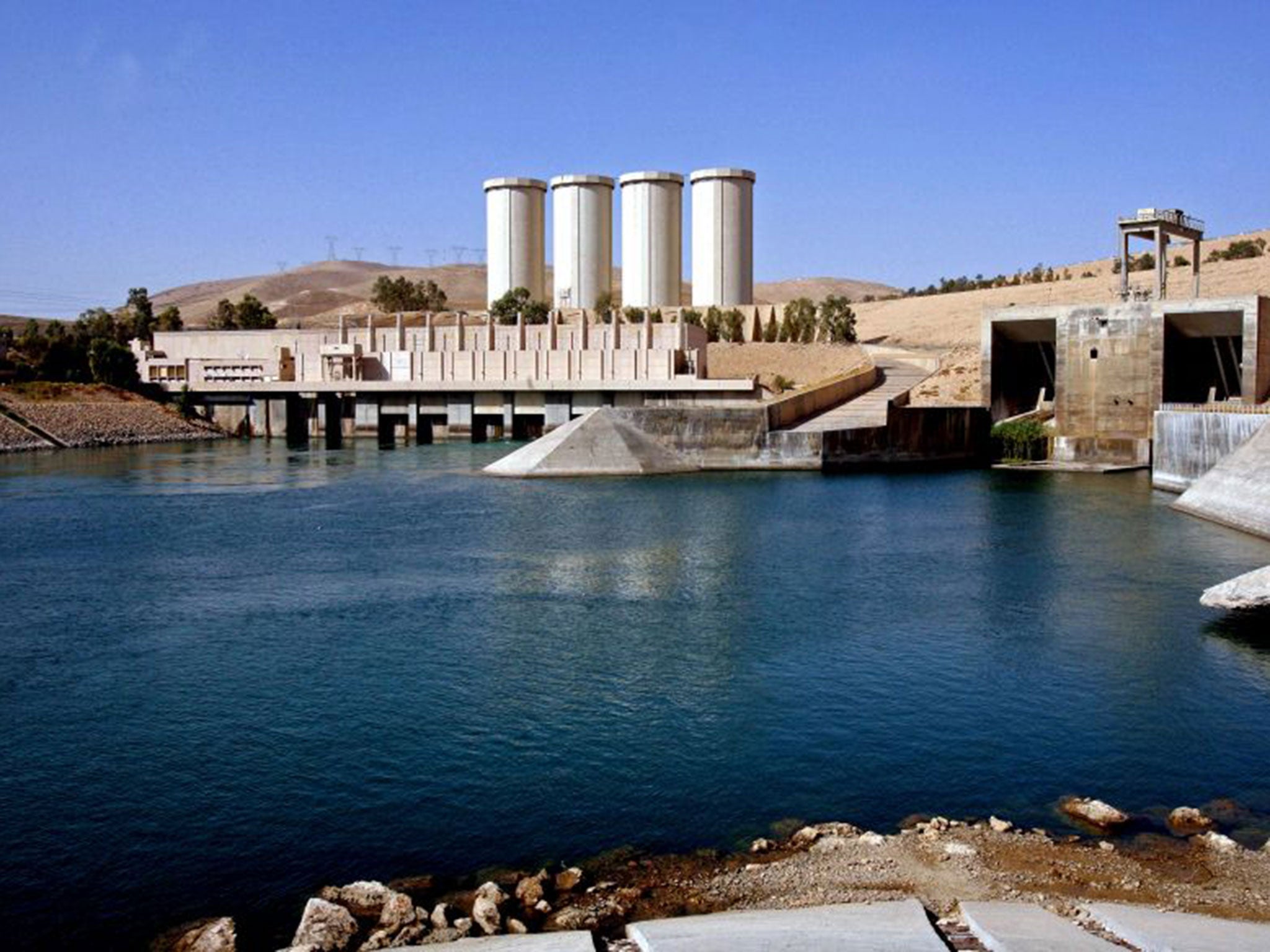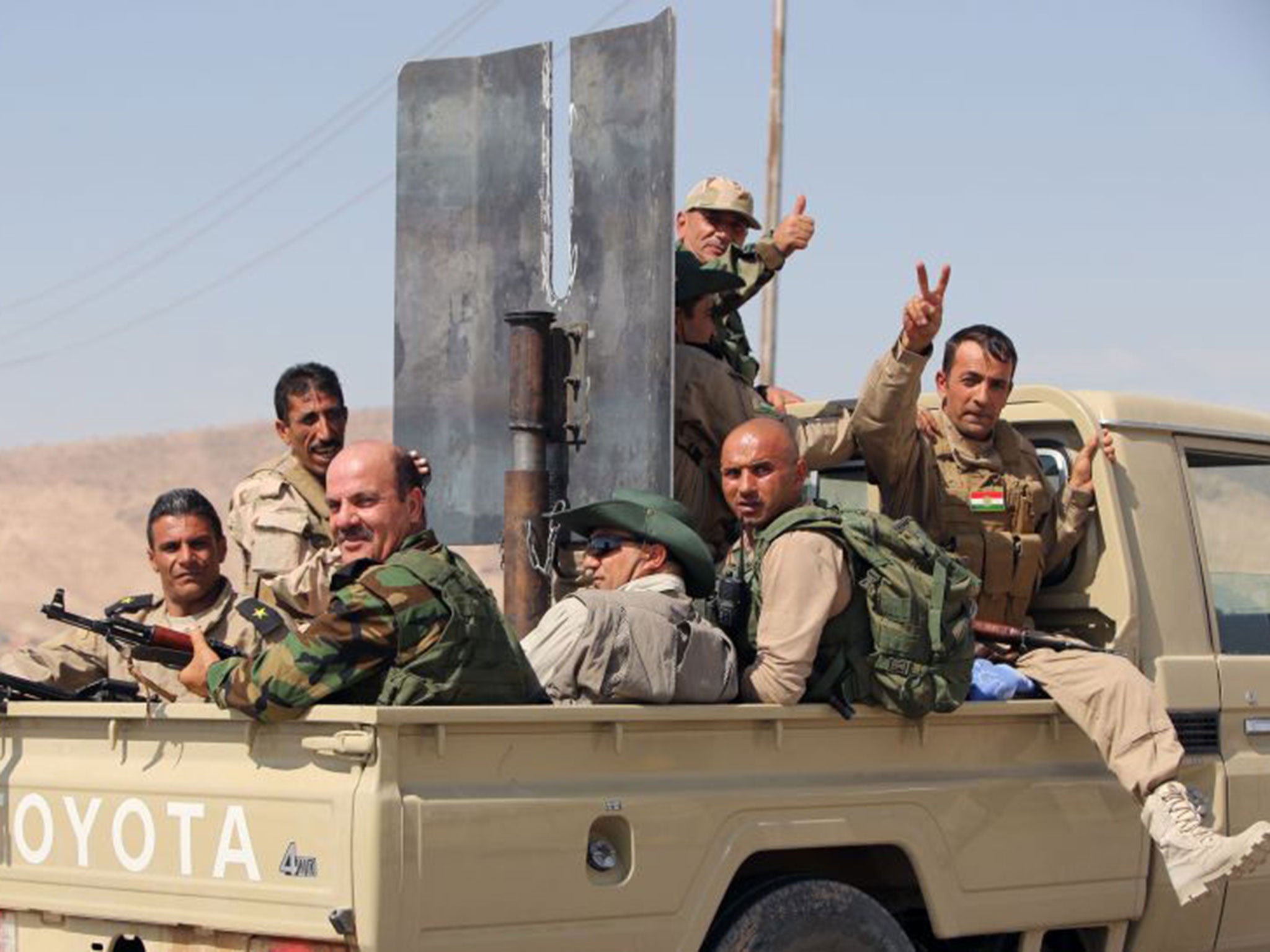US army and Iraqi government draw up emergency plan for collapse of 'world's most dangerous dam' near Mosul
Iraqi officials said there was nothing 'seriously wrong' with the dam following years of concerns

Your support helps us to tell the story
From reproductive rights to climate change to Big Tech, The Independent is on the ground when the story is developing. Whether it's investigating the financials of Elon Musk's pro-Trump PAC or producing our latest documentary, 'The A Word', which shines a light on the American women fighting for reproductive rights, we know how important it is to parse out the facts from the messaging.
At such a critical moment in US history, we need reporters on the ground. Your donation allows us to keep sending journalists to speak to both sides of the story.
The Independent is trusted by Americans across the entire political spectrum. And unlike many other quality news outlets, we choose not to lock Americans out of our reporting and analysis with paywalls. We believe quality journalism should be available to everyone, paid for by those who can afford it.
Your support makes all the difference.American forces have been working on plans to move hundreds of thousands of civilians to safety if a huge dam near Isis territory collapses in Iraq.
The US-led coalition is still determining the likelihood the Mosul Dam could fail but said it has developed emergency measures alongside the Iraqi government.
Built by Saddam Hussein's regime in the early 1980s, it is the largest in Iraq and one of the biggest in the Middle East.
But because of its construction largely of earth, resting on soft mineral foundations that are easily dissolved by water, the possibility for its collapse has long been a cause for concern.
A report by the US Army Corps of Engineers called it “the most dangerous dam in the world” in 2006 because of possible erosion and its impact on the residents of Mosul living downstream along the Tigris river.
Experts concluded that a fault in the dam's wall could unleash a 20 metre-high wave of water on Iraq's second city, wiping away anything in its path.
A letter to the Iraqi government warned that 500,000 people could be killed in the city of 1.7 million if the disaster occurred.
Many of those residents have now fled Mosul, which has become Isis' de-facto capital in Iraq.
Since the terrorist group's rapid advance in summer 2014, maintenance teams have struggled to gain access to the dam, which has been the focus of fierce battles.
Militants seized the area in July of that year but Iraqi forces and Kurdish fighters, with coalition air support, took it back within weeks.
The dam once supplied electricity and water to much of the country, but now only operates at partial capacity.

US Army Lt. Gen. Sean MacFarland warning that “when it goes, it's going to go fast, and that's bad" but said plans are in place to move civilians to safety.
“If this dam was in the United States, we would have drained the lake behind it,” Lt. Gen MacFarland added.
But speaking to the Associated Press by phone, Riyadh Izeddin, the director general of the dam, said he had not been informed by the US about any such contingency work.
“The Americans didn't tell us anything,” he said, countering the coalition's assessment that the structure is in serious danger.
“There is nothing to be afraid of. There is nothing seriously wrong with the dam."
Additional reporting by AP
Join our commenting forum
Join thought-provoking conversations, follow other Independent readers and see their replies
Comments